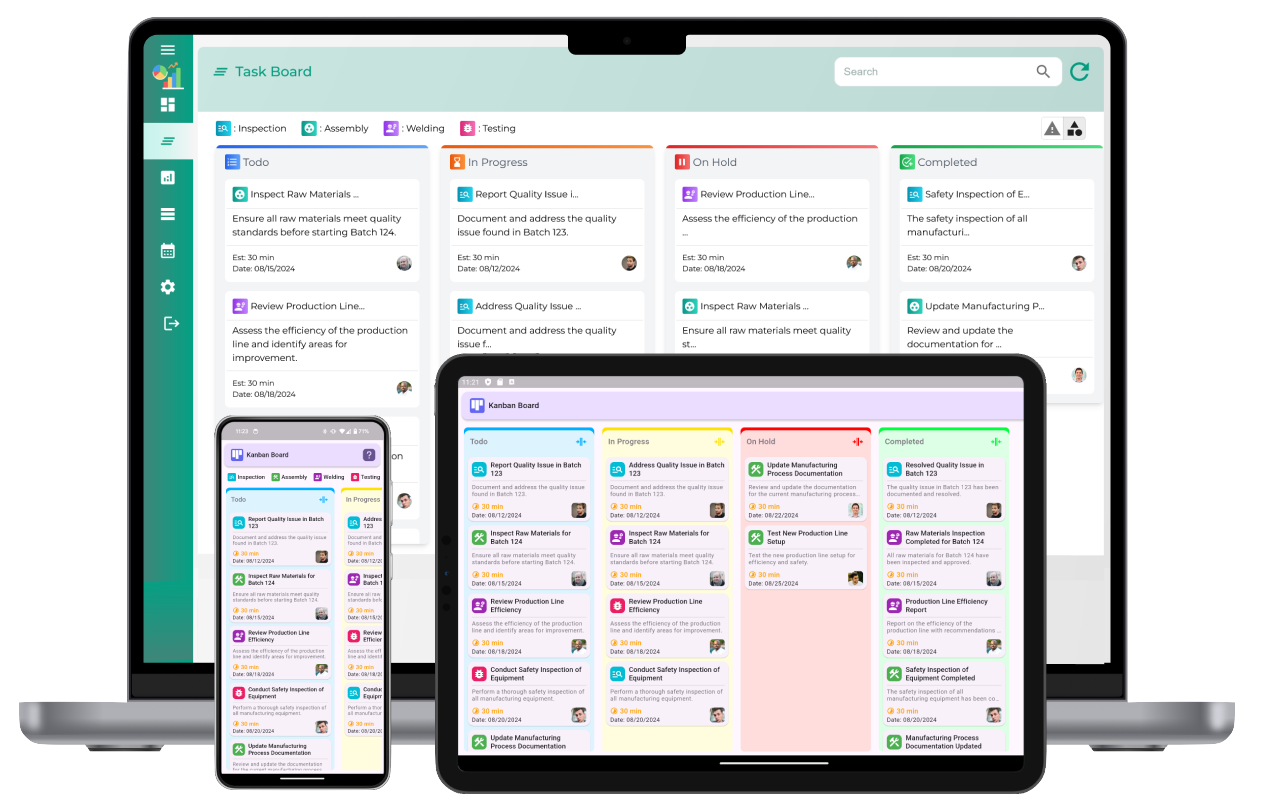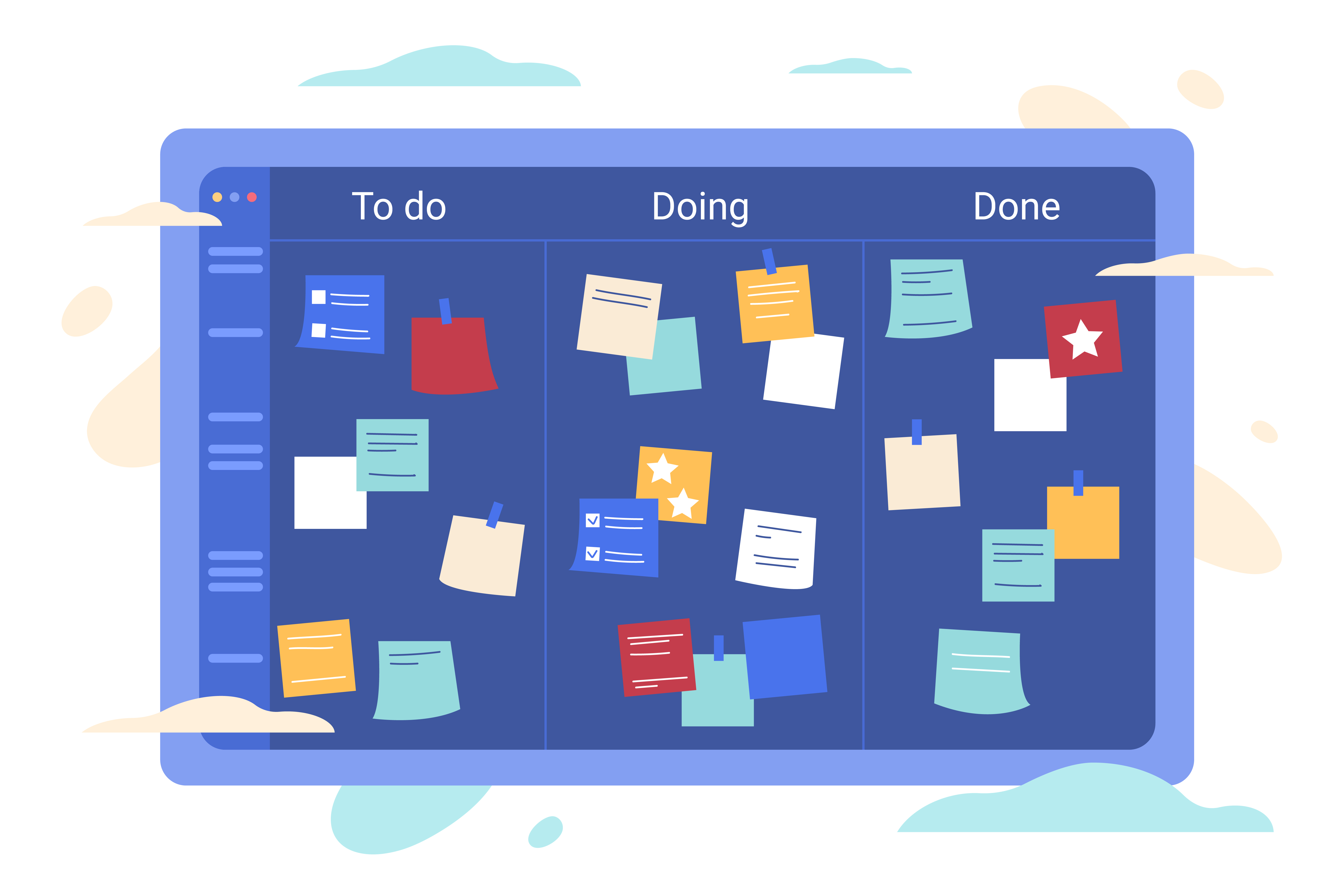What Is Kanban?
Kanban is a visual project management system designed to help teams organize and improve workflows. Originating in Toyota's production system, it uses a board and cards to represent tasks and their stages, making work transparent and manageable. Kanban is highly flexible, allowing for continuous delivery without overwhelming team members.

Understanding the Kanban System
The Kanban system revolves around managing work efficiently by visualizing tasks on a board, typically broken into columns such as "To Do," "In Progress," and "Done." The system promotes limiting work-in-progress (WIP) to avoid overloading teams, ensuring a steady, manageable workflow.

Kanban Core Practices
- Visualize the workflow: Display all tasks on a Kanban board.
- Limit work-in-progress (WIP): Cap the number of tasks in progress to maintain focus.
- Manage flow: Ensure tasks move through the workflow smoothly and quickly.
- Make process policies explicit: Clearly define and share rules and guidelines.
- Implement feedback loops: Regular reviews for continuous improvement.
- Collaborate and evolve: Foster teamwork and adapt to changes.
Kanban Board
The Kanban board is a central tool used to visualize the entire process. It consists of columns representing different stages of work (e.g., To Do, In Progress, Done). Tasks are represented by cards that move across the board as they progress, making it easy to see at a glance how much work is being done, where bottlenecks exist, and what is completed.
Electronic Kanban Systems
Electronic Kanban (e-Kanban) systems digitize the traditional Kanban board. These tools provide features like automated task tracking, real-time updates, and analytics. They are often used by remote teams or those working on complex projects, making it easier to scale and manage workflows digitally.
Scrum vs. Kanban
Scrum is a framework for managing work within time-boxed sprints, emphasizing roles, events, and predefined goals. Kanban is a more flexible approach, allowing continuous work without rigid structure or deadlines. While both are agile methodologies, Scrum is more prescriptive, and Kanban is adaptable to changing demands.
Benefits of Kanban
- Improved workflow visualization: Easy to track tasks and progress.
- Flexibility: Adapts to changing priorities without disruption.
- Enhanced productivity: Focuses on reducing multitasking and overloading.
- Continuous delivery: Tasks can be completed as soon as they’re ready without waiting for a new cycle.
- Quick identification of bottlenecks: Problems are easier to spot and fix.
Disadvantages of Kanban
- No defined roles: Lack of structure may lead to confusion in some teams.
- Difficult scaling: Managing large teams or complex projects can be challenging without clear organization.
- Dependency on team discipline: Kanban requires a motivated and self-managed team to succeed.
The Bottom Line
Kanban is a highly adaptable, visual system for managing workflows that encourages efficiency and continuous improvement. Its flexibility, simplicity, and focus on optimizing work make it an excellent choice for teams looking to streamline processes. However, it may require strong team discipline and clear guidelines to maximize its effectiveness.
How It Works:
- Cards (representing tasks) are moved across the board as they progress through different stages.
- Team members focus on moving a task to the next stage, adhering to WIP limits to avoid multitasking and overload.
- Periodic reviews are conducted to adjust processes and optimize workflow, ensuring steady improvement.
FAQ: What is the Kanban system and how does it work?
What is the Kanban System?
Kanban is a visual workflow management system designed to improve efficiency by organizing tasks into a series of stages. It originated in manufacturing but is now widely used in various industries, including software development. The system revolves around visualizing tasks on a Kanban board, which helps teams manage work progress and identify bottlenecks.
How does the Kanban system work?
Kanban works by displaying tasks as cards on a board divided into columns that represent different stages of the process (e.g., To Do, In Progress, Done). As tasks move through the workflow, they are moved from one column to the next. The system also limits the amount of work in progress (WIP) to avoid overloading team members, ensuring that tasks flow smoothly through the process. Continuous monitoring and adjustment help optimize the workflow over time.
What are the key principles of the Kanban system?
The core principles of Kanban include visualizing work, limiting work-in-progress, managing flow, and encouraging continuous improvement. These principles help teams maintain focus, optimize efficiency, and ensure steady task completion.
How does Kanban differ from other project management systems?
Kanban differs from systems like Scrum because it is more flexible and doesn’t require fixed sprints or roles. It allows for continuous delivery and adapts easily to changes, while Scrum operates in defined cycles with structured roles and timelines.
What are the benefits of using the Kanban System?
Kanban offers several benefits, including improved task visibility, better workflow management, flexibility in handling changing priorities, reduced multitasking, and continuous delivery of tasks.
Can Kanban be applied to industries other than software development?
Yes, Kanban is widely used in various industries such as manufacturing, healthcare, marketing, and more, to manage tasks and improve efficiency in both production and service processes.
What tools can I use to implement Kanban?
There are both physical and digital tools for implementing Kanban. Physical boards can be used in small teams, while digital tools (e-Kanban) provide features for collaboration, automation, and workflow tracking.